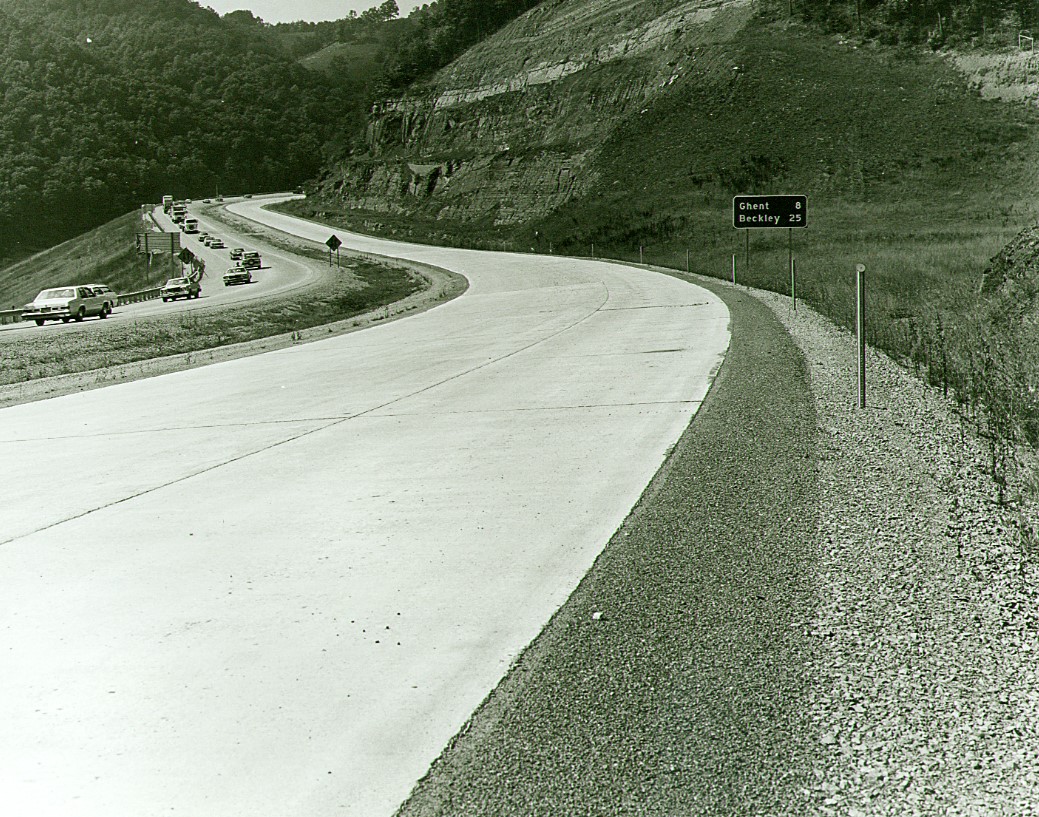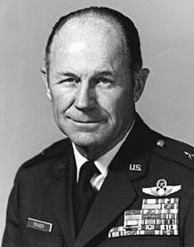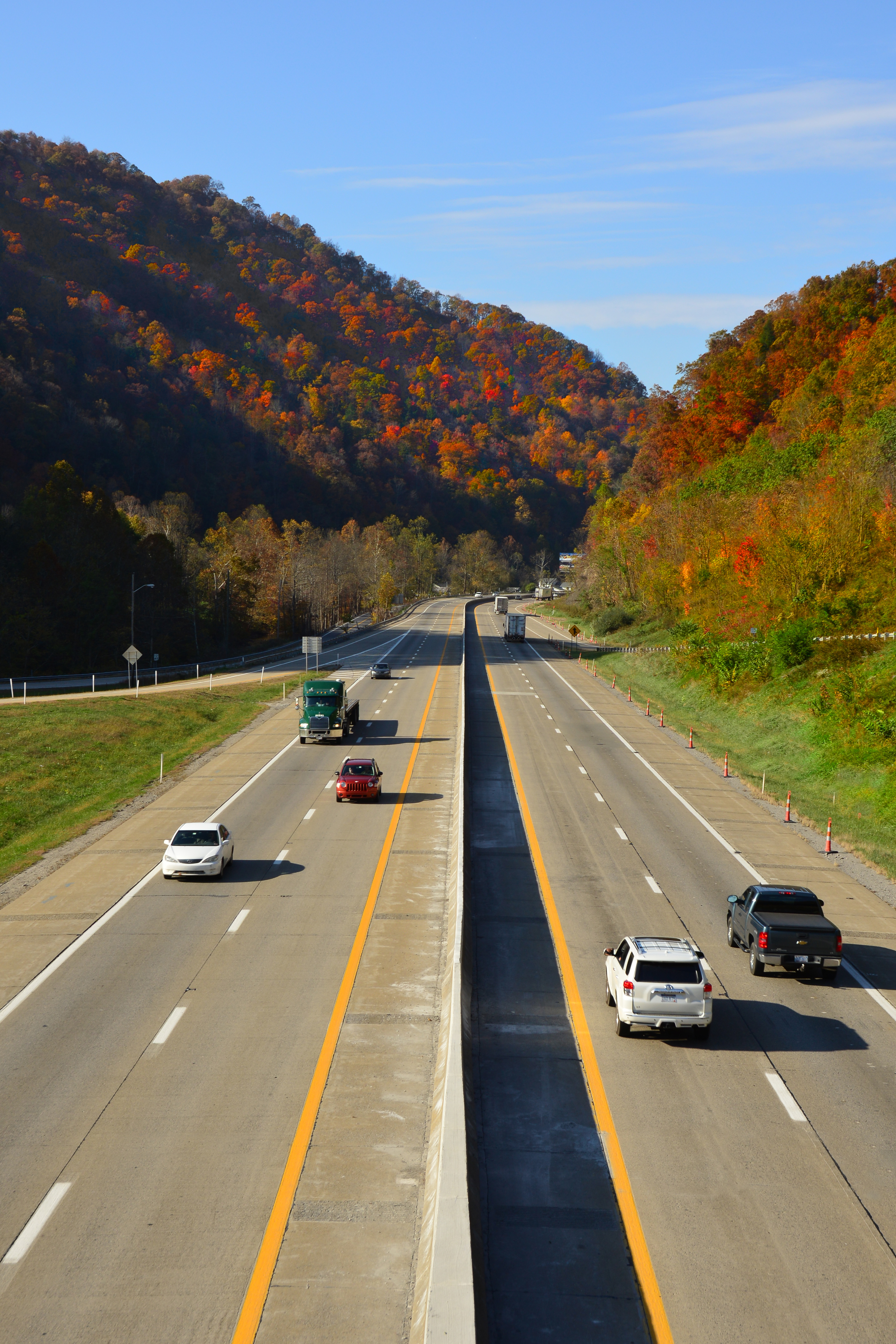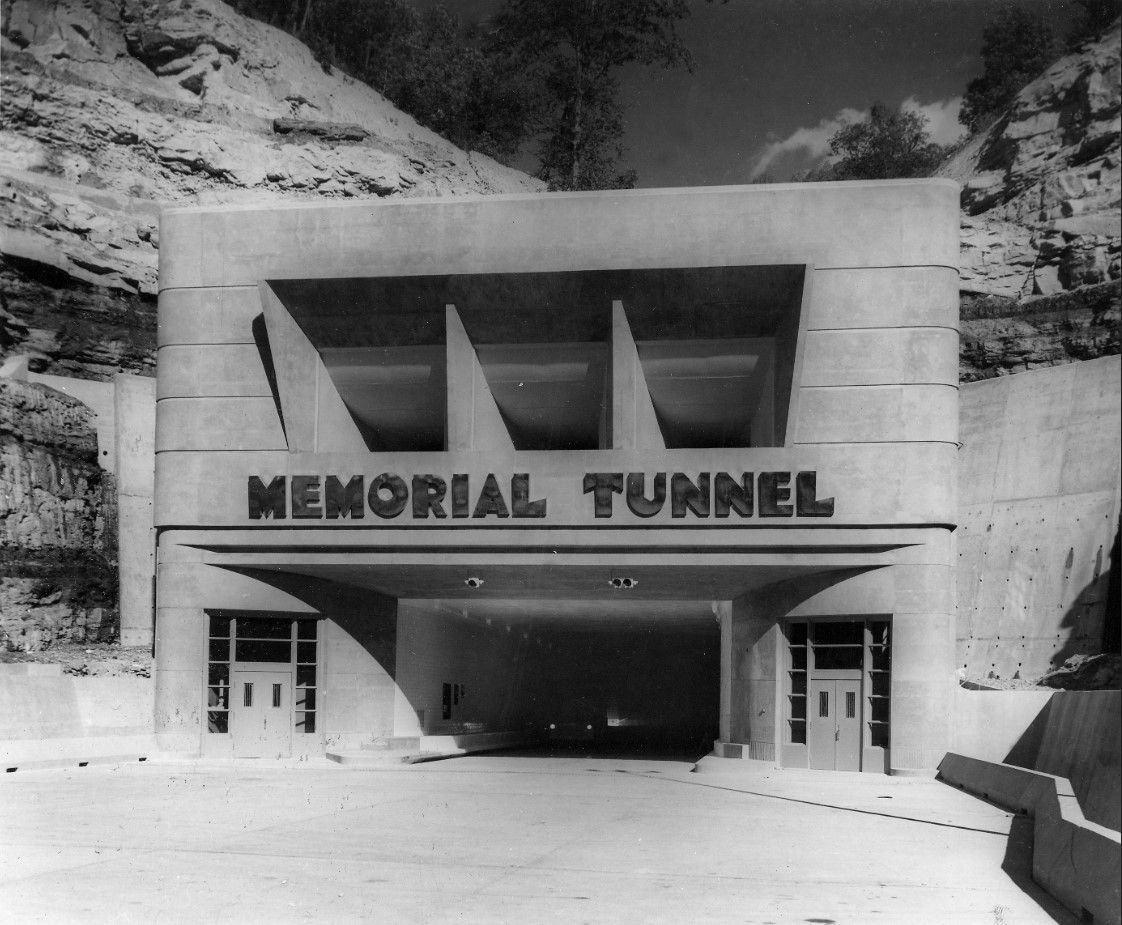The West Virginia Turnpike is a four-lane toll highway, 88 miles in length, between Princeton and Charleston, West Virginia. Interstate 77 is carried by the entire length of the Turnpike. Interstate 64 is carried from Charleston to south of the City of Beckley.
Described as "an engineering achievement of heroic proportion," the Turnpike traverses mountainous terrain that required grades of up to five percent and the movement of 33 million cubic yards of earth. The Turnpike climbs from an elevation of 600 feet at Charleston to an elevation of 3,400 feet at Flat Top Mountain.

Turnpike Construction
The Turnpike has 116 bridges - more than one every mile. Three of its major bridges were named for native West Virginia military heroes - two Congressional Medal of Honor winners, Sergeant Cornelius Charlton and Sergeant Stanley Bender, and one noted aviation pioneer, Brigadier General Charles E. (Chuck) Yeager, the first to penetrate the sound barrier.

Brigadier General Chuck Yeager
In addition to providing the traveler with the most direct route south from the Great Lakes and regions of Canada, the Turnpike carries Interstate 64 to south of Beckley, where it provides a much needed east-west route as well. Nature's vistas - the view from Flat Top Mountain, the Bluestone Gorge, spring's buds and blossoms and fall's panoply of color - add aesthetics to the list of conventional values of economy and time found on the West Virginia Turnpike.

Scenic WV Turnpike
To state the construction of the Turnpike was an engineering marvel, may well be understating the facts. Considering the original construction of the Turnpike required:
- 60% of the excavation through rock.
- More than 16 million pounds of dynamite to move through 33 million cubic yards of limestone, shale and earth.
- Over 2,000 different machines to complete the process.
- Almost 12 million pounds of reinforcing steel.
- 381,800 square feet of guardrail.
The completion of the West Virginia Turnpike was a milestone in West Virginia history. Consisting of two main traffic lanes, each 12 feet wide and flanked by a nine foot asphalt lane. Traveling from Charleston to Princeton now took one hour and 47 minutes less time.
In late 1976, work began to upgrade the Turnpike to national highway standards with an added 88 miles of roadway. The Memorial Tunnel, a two-lane passageway, stood in the way of completing the upgrade. A decision was made to bypass the tunnel. A 1.72 mile extension would be built to bypass the tunnel and the Stanley Bender Bridge which spanned Paint Creek. In 1988, the upgrade was completed. The Memorial Tunnel, once hailed as state of the art, was closed.

Memorial Tunnel
1989 witnessed the removal of the side tolls throughout the Turnpike. These were tolls that were collected at the exits. Currently, the only side toll that remains is located at Exit 48, the North Beckley interchange to Route 19.
With the completion of Interstates 64, 77 and 79, the West Virginia Turnpike offered travelers a safe and efficient route through the Mountain State from all points of the country.